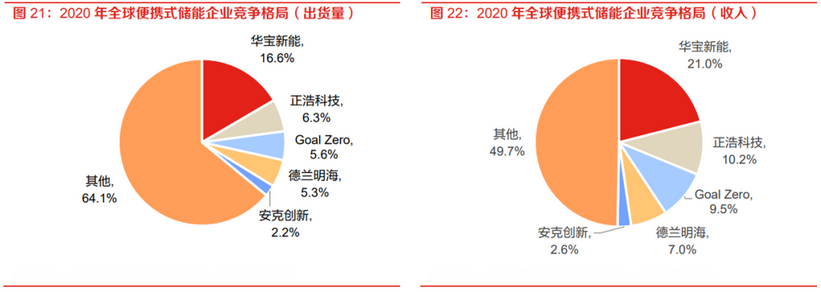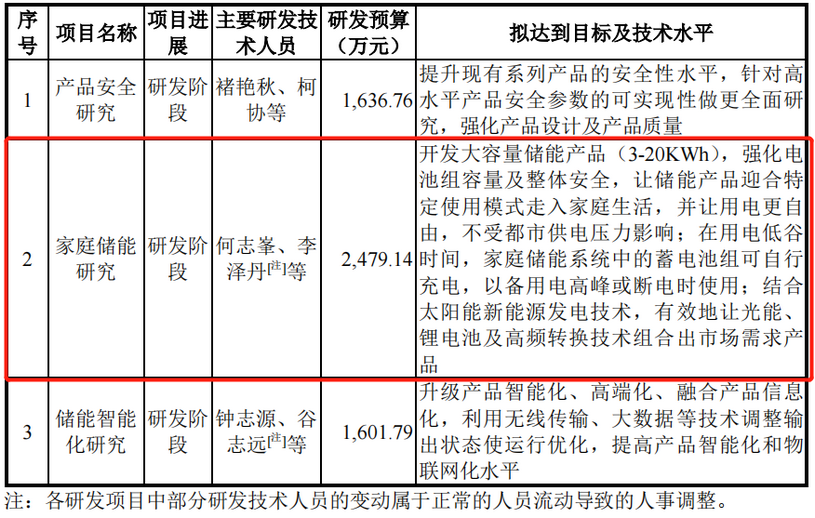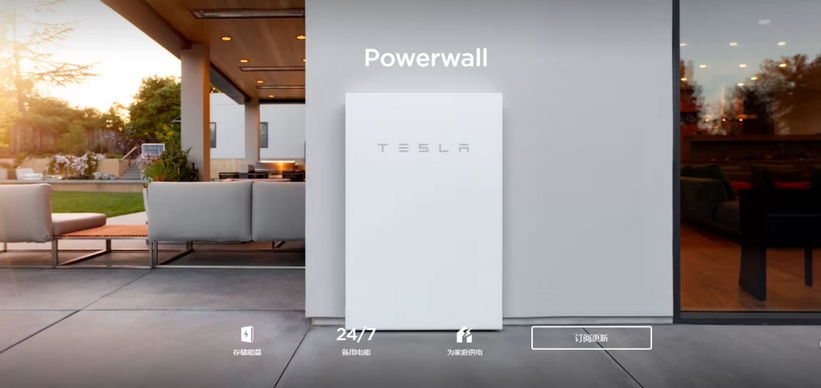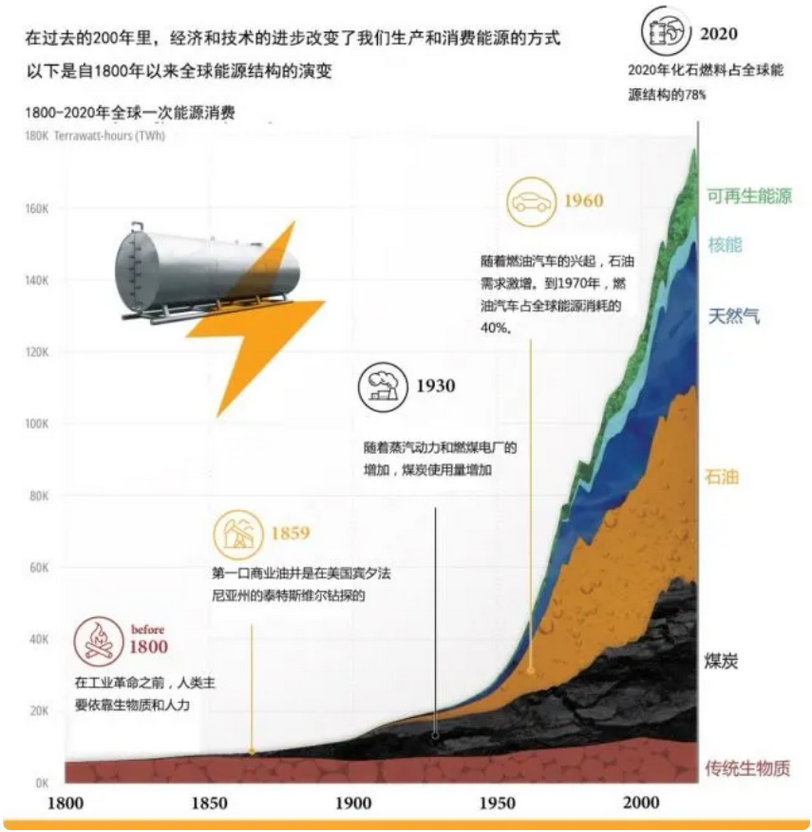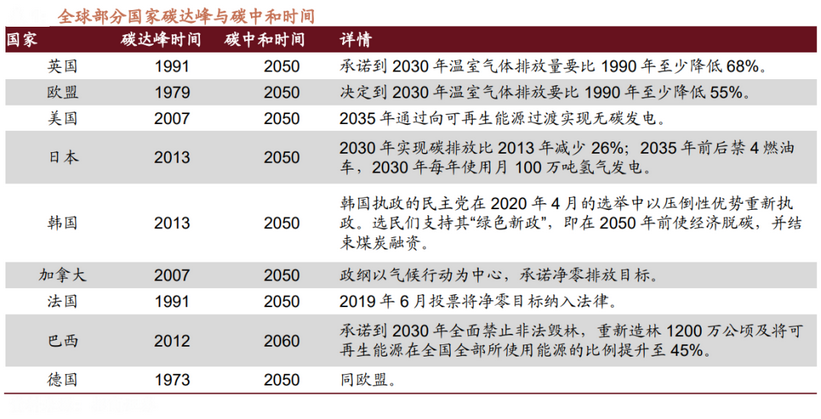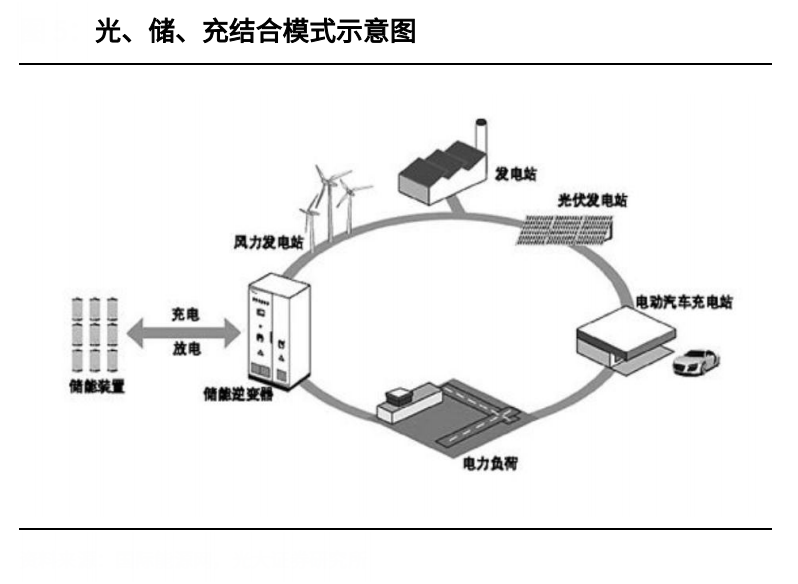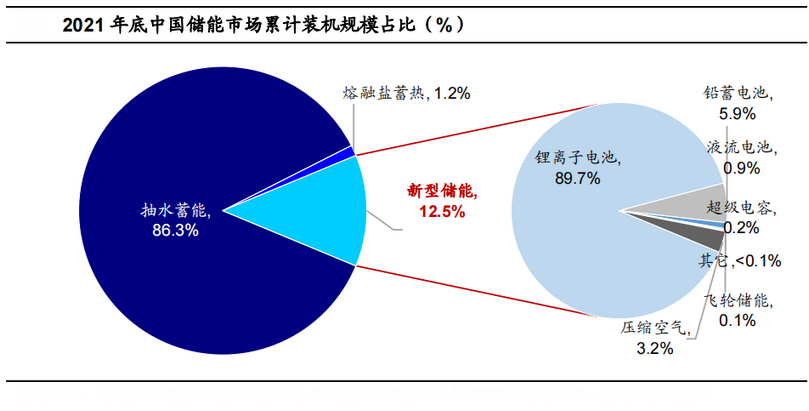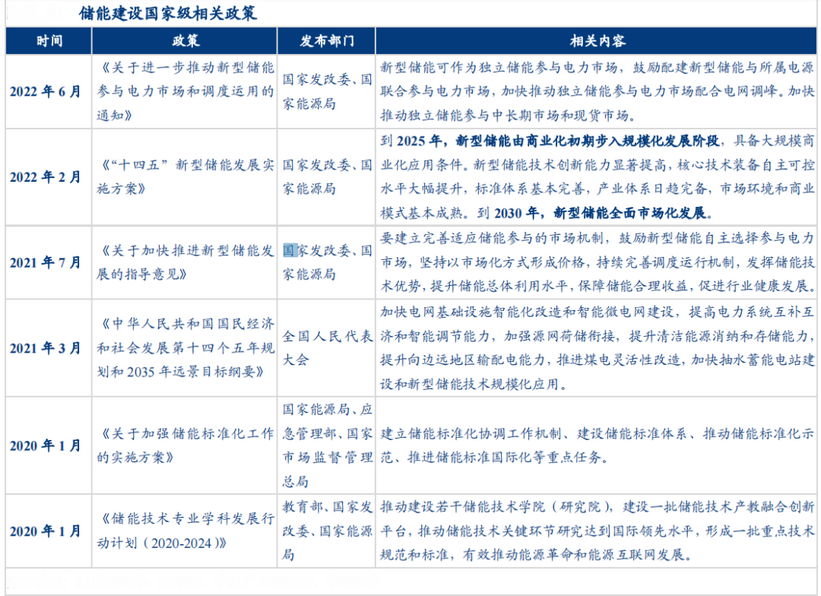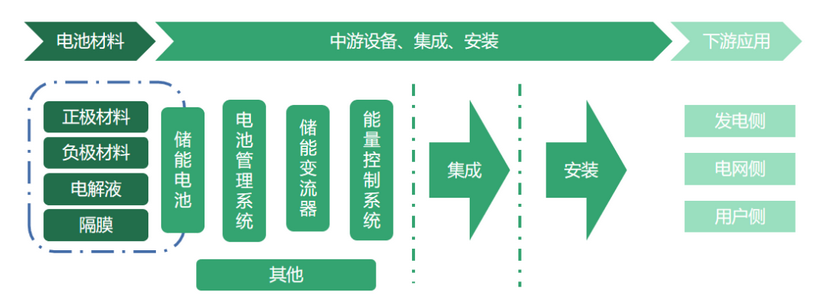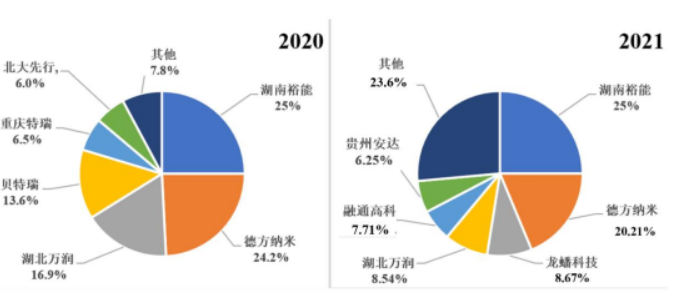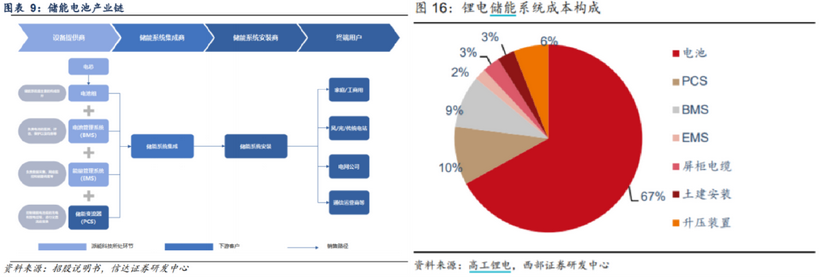| China, the global energy storage "shoulder the handle"! |
| Release time:2023-02-17 11:30:26| Viewed: |
After the European energy crisis, more and more overseas families began to equip household energy storage to cope with the dilemma of insufficient electricity.
However, almost all of these "large power packs" in the fire this year are made in China.
According to the data of China Chemical and Physical Power Industry Association, China contributed 91.9% of the global production of portable energy storage products. Of the top five players (income) who account for half of the market share, only the third ranked Goal Zero is American players, but its OEM is also supplied by A-share listed companies Haopeng Technology (001283. SZ) and Boliwei (688345. SH).
Of course, made in China will not be limited to portable energy storage. The trend of Huabao Xinneng (301327. SZ), a newly listed outdoor energy storage leader, can be seen. Its second growth curve begins to shift to the household energy storage market. In the whole R&D investment, the project under research with the highest budget is also household energy storage research.
There is also Zhenghao Technology Ecoflow, whose DELTA Pro can provide 3.6 kilowatt-hour capacity by itself, and can also expand the capacity to a maximum of 25 kilowatt-hour power by means of power pack, which can meet the power demand of a family for several days; This year, Teeland Minghai launched the largest household energy storage product that can expand to more than 70 kilowatt-hours.
Project status of Huabao Xinneng under research
Large markets often mean more fierce competition. From the perspective of cost structure, CNESA data shows that batteries account for 67% of the cost of energy storage systems. Compared with power battery, energy storage battery has lower requirements for energy density. As a result, power battery enterprises have long been cracking down on the domestic energy storage market. For example, Tesla, an electric vehicle head company, also accounts for the largest share of household energy storage. According to S&P Global data, Tesla has a global market share of 18% and a market share of 55% in the United States.
Tesla home energy storage product Powerwall
If standing in a more macroscopic dimension, electricity is "produced" from the power generation side and transmitted to users through the dense grid. Customers can be further divided into B-end customers and C-end customers. The above portable energy storage and household energy storage are collectively referred to as household energy storage, which is the C-end customer of the power grid. In this link, each link is an application scenario for energy storage.
After doing a lot of research and contacting many enterprises, I try to answer the following questions:
Energy storage is the infrastructure to achieve the dual-carbon goal
To understand the development of energy storage, we must start with the evolution of energy structure. Since 1800, the human energy structure has undergone three transformations: the first is the increase of coal use in the context of the industrial revolution; The second is the invention of internal combustion engine and the penetration of automobile, which increases the demand for oil. At the same time, the thermal efficiency of natural gas is higher, and it has gradually replaced coal in some fields such as heating.
Evolution of global energy structure
The third change is at present. With the continuous increase of carbon emissions, a series of extreme reactions caused by global warming have become a real thorny problem. Therefore, countries and regions have successively put forward the "carbon peak" and "carbon neutral" dual-carbon goals. In September 2020, China formally proposed to achieve "carbon peak" by 2030, that is, carbon emissions reached the highest point, and then began to decline gradually; By 2060, "carbon neutrality" will be achieved, that is, the amount of carbon emitted and absorbed will be offset positively and negatively.
As the most mainstream power generation method at present, coal even reaches 70% or more in China. In order to meet the requirements of carbon neutrality, China has continued to increase new energy power generation, 60% of which comes from wind power and solar energy.
In this context, the increase in the share of renewable energy is a certain trend. However, compared with traditional energy sources, whether wind or sunlight are used to generate electricity, there is instability. In short, the wind is intermittent, and photovoltaic power generation can only be conducted in the daytime. Such instability will be transmitted to the grid connection after power generation.
In order to ensure the stability of the power grid, only a certain amount of light and electricity can be produced every day. The best way to use the light and electricity is to store them first and then merge them when the load of the power grid is small.
European household storage demand doubled, and upstream costs decreased by 60%
According to different technical principles, the energy storage methods can be divided into mechanical energy storage and electrochemical energy storage. Among them, mechanical energy storage includes pumped energy storage, compressed air energy storage, flywheel energy storage and supercapacitor energy storage; Electrochemical energy storage is completed by charging and discharging the energy storage battery, which can be further subdivided according to the battery material. Interestingly, pumped storage is the mainstream form of energy storage at present, accounting for more than 90%.
It can be simply understood that electric energy storage is a new type of energy storage except for pumped energy storage. In February 2022, new energy storage was included in the Fourteenth Five-Year Plan. According to the Implementation Plan for the Development of New Energy Storage in the "Fourteenth Five-Year Plan" issued by the National Development and Reform Commission and the National Energy Administration, China's new energy storage will enter the stage of large-scale development from the early stage of commercialization in 2025; In 2030, we will realize comprehensive marketization.
Compared with pumped energy storage, electrochemical energy storage has the advantages of more flexibility, lower initial cost of construction and shorter period. More importantly, it has no geographical restrictions and is more widely used. For example, the power rationing in Sichuan this year is mainly due to the drought in Sichuan and the lack of electricity produced by using the terrain difference, that is, hydropower.
The largest variable at the international level occurs in Europe. Under the changing external environment, Europe is facing an energy crisis.
In Europe, 20% of the electricity comes from natural gas. According to Everbright Futures, 83% of the EU's natural gas in 2021 depends on imports, of which Russia accounts for more than half.
This leads to two results. First, the price of electricity in Europe is rising rapidly. S&P data shows that the price of electricity in Europe is relatively stable from mid-2020 to 2021, showing a slight increase trend at around 50 euros/MWh, while in mid-2022, the highest price of electricity has increased more than 6 times under the influence of geopolitics; Secondly, due to the possible damage of the pipeline, there is great uncertainty in power supply.
Since the power grid is "unreliable", it is better to generate electricity by yourself. More and more European consumers are sticking solar panels on their roofs, and household energy storage is accelerating with the penetration of PV. According to Minsheng Securities Research Institute, the installed capacity of household energy storage in Europe will more than double in 2022. In the longer term, CAGR will exceed 70% by 2025.
Core technology determines the discourse power of the industrial chain
The energy storage industry chain can be subdivided into five levels. The first level is raw materials, in which battery materials account for the vast majority. The battery material consists of four parts: positive material, negative material, electrolyte and diaphragm, of which the proportion of positive material is the highest. Specifically, the proportion of iron lithium battery and ternary battery is 48% and 58% respectively.
36 Krypton has reported on Yuneng New Energy, which is the largest supplier of cathode materials for lithium-ion batteries in China. According to the lithium battery data of Gaogong, the market share of Yuneng new energy will account for about one quarter in 2021. The shareholders include two trillion market value enterprises, Ningde Times and BYD, which are power battery head enterprises, Ningde Times, BYD and Yiwei lithium energy suppliers.
The second level is energy storage equipment, in which the battery accounts for two-thirds of the cost, and the other main parts are PCS, BMS and EMS. Its main business covers battery, BMS and EMS. It has mastered the research and development capabilities of battery cells. It is the leading enterprise in the domestic household energy storage market, ranking second only to Tesla in the global market share.
Ningde Times is the dual leader of power battery and energy storage battery in China. It laid out its energy storage business as early as 2014. According to SNE data, the market share of energy storage battery was only 5.5% in 2019, and surpassed BYD to 14.0% in 2020, becoming the first energy storage battery enterprise in China and the third in the world. In addition, according to the 2022H1 report, its power battery business has completed cost transmission, and its energy storage battery business will complete cost transmission in Q3.
The last three links of the industrial chain are integrators, installers and end customers. Integrators mainly test the channel ability and brand ability of brands; The installer mainly tests its service ability to end customers.
There are fewer links in the portable energy storage industry chain, and the upstream and midstream links are similar to household energy storage. The installation link is omitted, and the integrator sells directly to the C-end customer or goes through a layer of distributors in the middle. |



